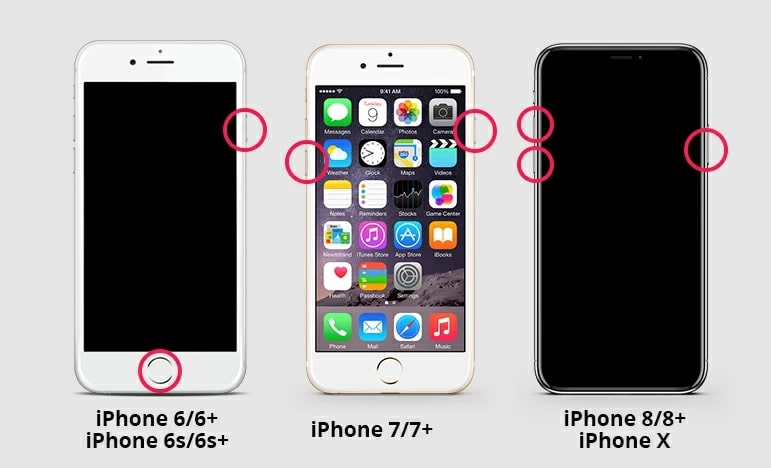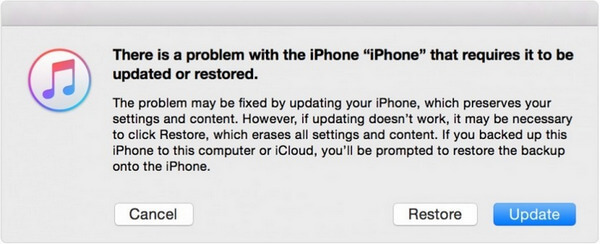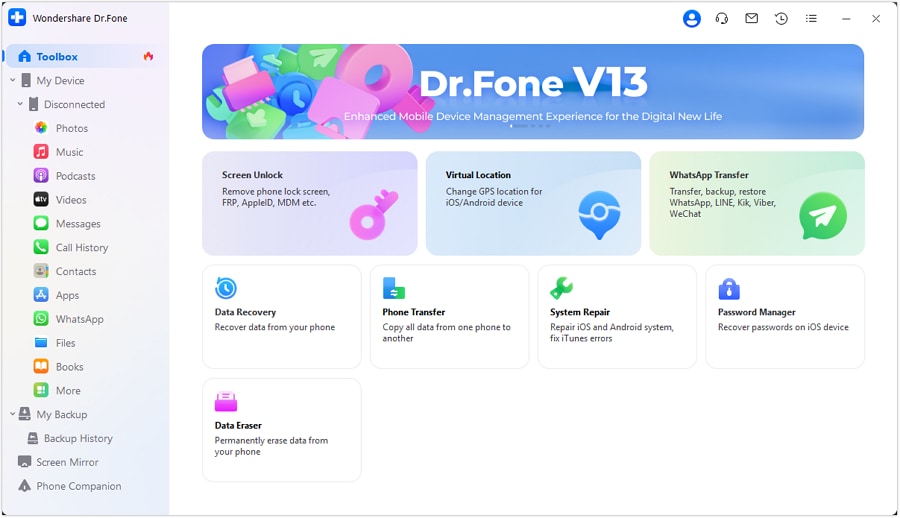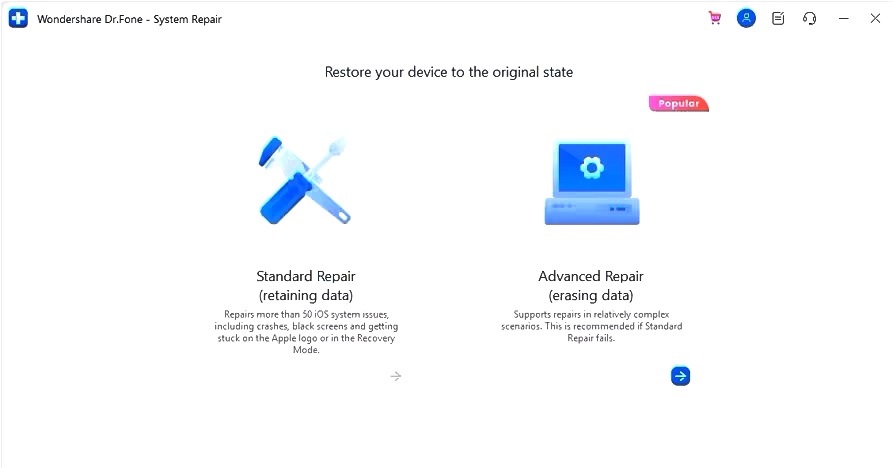Tech
Troubleshooting an iPhone Stuck on the Apple Logo
Have you pressed the power button on your iPhone and waited for the familiar home screen? However, you’re met with a frozen Apple logo. Panic may set in as you wonder if your device is beyond repair.
But fear not! In this article, we’ll provide the common reasons behind the iPhone being stuck on the Apple logo and guide you through the steps to resolve it.
Part 1: Top Reasons Why Your iPhone Gets Stuck on the Apple Logo
It’s essential to gain a comprehensive grasp of the fundamental factors contributing to this problem. These reasons range from temporary bugs to iOS update problems and hardware issues. A clear understanding of these reasons will empower you to choose the most effective solution. Below are the common factors that lead to your iPhone being stuck on the Apple logo:
- iPhones are sophisticated devices running complex software. Occasionally, this software can encounter glitches during startup, causing the device to freeze on the Apple logo.
- When an iOS update fails to install correctly or gets interrupted, it can leave your iPhone in a state where it’s unable to complete the update process. This results in the Apple logo being displayed indefinitely.
- Some users opt to jailbreak their iPhones. However, this process can sometimes fail, leading to the Apple logo issue.
- Physical damage, such as exposure to water, can disrupt the normal functioning of your iPhone and potentially lead to it being stuck on the Apple logo.
- If essential system files or user data become corrupted, your iPhone may struggle to boot up properly, causing it to remain stuck on the Apple logo.
Part 2: The Quickest Ways to Get Your iPhone Out of the Apple Logo
Now that we’ve gone through why an iPhone got stuck on the Apple logo, it’s time to explore the solutions. Depending on the severity of the problem, given below are 4 solutions you can try to resolve this issue:
Fix 1: Force Restart Your Device
One of the simplest and most effective ways to address an iPhone stuck on the Apple logo is by performing a force restart. This approach has the potential to address minor software hiccups. The process varies depending on your iPhone model, so follow the instructions below for your specific device:
- iPhone 6S and Earlier Models: Simultaneously press and hold the “Home” and “Sleep/Wake” buttons and release them once the Apple logo appears.
- iPhone 7 and 7 Plus: Press and hold the “Volume Down” and Sleep/Wake buttons until you see the Apple logo.
- iPhone 8 and Higher Models: Press and release the “Volume Up” button. Perform the same procedure using the “Volume Down” button, and continue to press and hold the “Side” button until the Apple logo becomes visible.

Fix 2: Use Recovery Mode
If your iPhone is still stuck on the Apple logo, you can try using Recovery Mode. It allows for a more extensive restoration of your device’s software. Here’s how to use Recovery Mode to fix the problem:
Step 1: After launching iTunes/Finder and connecting your iPhone, use one of the following methods to put it into Recovery Mode if not already detected by iTunes/Finder:
- For iPhone 6S and Earlier: Simultaneously press and hold both the “Home” and “Sleep/Wake” buttons until the recovery mode screen becomes visible.
- For iPhone 7 and 7 Plus: Simultaneously press the “Volume Down” and “Sleep/Wake” buttons until the recovery mode screen appears.
- For iPhone 8 and Later: First, quickly tap and release the “Volume Up” button. Afterward, promptly touch and then release the “Volume Down” button. Finally, press and hold the “Side” button until the recovery mode screen is displayed.
Step 2: Now you will see a prompt appear in iTunes/Finder with “Update” and “Restore” options. Choose “Restore” and follow the given guidelines to complete the process.

Fix 3: Use Wondershare Dr.Fone
If you don’t have a backup at hand and don’t want to lose data, we have the perfect solution for you. It is a third-party tool, Wondershare Dr.Fone – System Repair (iOS), that can fix the iPhone stuck on the Apple logo issue without causing data loss. It can fix over 150 iOS system issues without affecting your cherished data.
Moreover, this tool is also handy for upgrading/downgrading your device without jailbreaking. You can even upgrade to the latest beta version with it. Following are the detailed steps you need to fix iPhone stuck on the Apple logo issue:
Step 1: Proceed with the System Repair Tool
Proceed to launch Wondershare Dr.Fone on your computer to begin the repair process for your iOS device. After the launch, head toward the “Toolbox” option from the top left side of the screen. There, you will see different options from which you need to tap on “System Repair.” Connect your device through the data cable, and select “iOS” in the new window.

Step 2: Download the Required Firmware
After this, another window will appear with different options. Tap on “iOS Repair,” and from the next window, hit on the “Standard Repair” option. Enable your iPhone’s Recovery Mode so the platform can detect the necessary firmware. Once the firmware is detected, download it on your device by clicking the “Download” option in front of it.

Step 3: Fix the iPhone Stuck on Apple Logo Issue
After the required firmware is downloaded, then the platform will confirm it. You have to tap on the “Repair Now” button to begin repairing your iOS device. From the progress bar, track the process and hit the “Done” button on its completion. This will finish the repair process, and your iPhone will be usable.

Fix 4: Contact the Apple Support
If you’ve tried all the previous fixes, and your iPhone is still stuck on the Apple logo, it’s time to reach out to Apple’s support channels. Apple provides extensive customer support to help you with hardware and software issues. When contacting Apple Support, be prepared to explain the problem in detail and mention the steps you’ve already taken to try and resolve it.
Conclusion
Dealing with an iPhone stuck on the Apple logo can be a frustrating experience, but there are several methods you can try to resolve the issue. In this guide, we’ve covered a range of solutions, from force restarts to using iTunes.
These common solutions may not work in every case, especially if the problem is more complex. This is where third-party tools like Wondershare Dr.Fone can be a valuable resource. Moreover, Wondershare Dr.Fone is trusted by many users and helps you repair various iOS-related issues or backup iPhone.
SEE ALSO: Apple Introduces Innovative UV Light Verification System To Combat Counterfeit iPhone 15 Packaging

Tech
US: A Judge Mandates that Google Allow Competing App Stores to Access Android

(VOR News) – The ruling is that Google, the greatest technology firm in the world, is required to make its Android smartphone operating system available to merchants that supply applications that are in direct rivalry with Google’s. This decision was reached by a judge in the United States of America.
The Android Play store, which is owned and operated by Google, was found to be an example of an illegal monopoly arrangement by a jury in the state of California on Monday. The finding was reached by a jury. Monday is the day that this decision was come to.
An earlier federal judge ruled Google’s search engine illegal.
This finding, which came after that decision, has forced the company to suffer yet another setback. As a result of the corporation having already encountered its initial obstacle, this decision has been established. This particular decision was made by the judge during the month of August, when the month was in progress.
In light of the fact that the decision was made, what exactly does it mean that the choice was accepted?
In accordance with the verdict, Google is obligated to make it possible for users to download Android app stores that are offered by third-party competitors. For a period of three years, the corporation is prohibited from imposing restrictions on the usage of payment mechanisms that are integrated into the application.
In addition, it is important to keep in mind that Google does not possess the right to impose restrictions on the utilization of ways to make payments online.
Additionally, the verdict makes it unlawful for Google to give money to manufacturers of smartphones in order to preinstall its app store. Smartphone manufacturers are prohibited from doing so.
Furthermore, it prevents Google from the possibility of sharing the revenue that is generated by the Play store with other companies that are in the industry of delivering mobile applications.
In addition to this, the court has mandated the establishment of a technical committee that will be made up of three different people chosen at random.
The committee will be responsible for monitoring the implementation of the reforms and finding solutions to any disagreements that may occur as a consequence of the implementation of the reforms while they are being implemented. This task will fall under the committee’s purview so that it may fulfill its duties.
However, certain components were allowed to be put into action until July 1st, despite the fact that the judge’s statement suggested that the ruling would take effect on November 1st. The statement was the basis for the ruling, which ultimately became effective.
Particularly, I wanted to know what Google’s reaction would be.
There is a fact that Google does not adhere to this directive, which has been brought to their attention. This document argued that the alterations that the judge had ordered to be made would “cause a range of unintended consequences that will harm American consumers, developers, and device makers.”
The judge had ordered the modifications to be implemented. The alterations were to be carried out as indicated by the judge’s ruling. The judge made it clear that he expected these revisions to be carried out in accordance with his guidance.
The company’s regulatory affairs vice president, Lee-Anne Mulholland, provided the following statement: “We look forward to continuing to make our case on appeal, and we will continue to advocate for what is best for developers, device manufacturers, and the billions of Android users around the world.”
On average, over seventy percent of the total market for smartphones and other mobile devices is comprised of mobile devices that are powered by the Android operating system. Both smartphones and other small mobile devices are included in this category.
In the event that the Play app store continues to be shown on the home page and that other Google applications are pre-installed prior to the installation of the Android application, smartphone manufacturers are entitled to install the Android application at no cost at their discretion.
Additionally, the Android application can be installed on devices that are manufactured for smartphones.
SOURCE: DWN
SEE ALSO:
Over The Planned “Link Tax” Bill, Google Threatens to Remove NZ News Links.
Tech
WhatsApp Now Features a “Mention” Tool for Status Updates and Stories.

(VOR News) – Those who use WhatsApp now have the ability to mention other people in their stories or status updates as a consequence of a feature that was only recently enabled on the platform.
Previous to this point, this capability was not available. It wasn’t until quite recently that this capability became available to the public.
According to the information that was provided by the company, users now have the opportunity to tag close friends in their stories, and the person who is mentioned will have the option to go back and re-share an earlier version of that story. This information was provided by the company. The corporation was kind enough to reveal this information to us.
Because of a new feature that has been added to the WhatsApp app, users now have the opportunity to like individual stories and status updates.
This capability was previously unavailable to WhatsApp users.
A significant amount of progress has been made in this context. Alternative readers now have the chance to “like” a work, which is comparable to liking a post on Facebook. This feature was introduced in recent years. When compared to the past, this is a tremendous shift.
At one point in time, viewers were only permitted to observe the total number of views that a particular story had gotten. These restrictions were eliminated in later versions of the software.
Additionally, it is essential that the likes and reactions to a story be kept anonymous during the entire process. One of the factors that contributes to the general mystery that surrounds this characteristic is the fact that this is one of the elements.
The person who brought it to the attention of others is the only person who will be able to judge who enjoyed it and who did not care about it. These individuals will be able to make this determination.
A notification will be issued to the individual who was referenced earlier in the sentence and who was named in the story or status update that was discussed. A notification of this nature will be sent to the individual via WhatsApp.
This message will be sent to the user in question whenever that person makes a reference to another person while they are in the process of elaborating on a narrative or updating their status. You will receive a notification alerting you that you have been tagged in the narrative.
This notification will be delivered to the person who receives this message. In addition, students will be provided with the opportunity to re-share the tale for themselves.
It is important to note that if the names of individuals who have been referenced in a narrative or a status update are included in any of these, then the names of those individuals will not be accessible to any third party through any of these. In light of the fact that the identities of those individuals will be concealed from public disclosure, this is the condition that will be required.
While WhatsApp recently made the announcement that it will be incorporating this functionality, it is highly likely that not all users will have access to it at the same time.
This is despite the fact that WhatsApp recently made this announcement.
Despite the fact that WhatsApp has only recently made a public announcement that it will move forward with the deployment, this is the situation that has presented itself.
As soon as a short period of time has elapsed, access will be made available to each and every person on the entire world.
Additionally, WhatsApp has hinted that new functionalities might be introduced to the status and updates tab in the future months.
The purpose of these capabilities is to provide users with assistance in maintaining healthy connections with the individuals who play a vital role in their living experiences. This is done in order to give users with support in maintaining close relationships with the folks who are the subject of the inquiry.
It is with the purpose of supporting users in successfully keeping close ties with the individuals in question that this step is taken.
SOURCE: DN
SEE ALSO:
Over The Planned “Link Tax” Bill, Google Threatens to Remove NZ News Links.
Accenture and NVIDIA Collaborate to Enhance AI Implementation.
Tech
Over The Planned “Link Tax” Bill, Google Threatens to Remove NZ News Links.

(VOR News) – Google has sent a strong message to the New Zealand government, threatening to stop boosting local news content should the Fair Digital News Bargaining Bill become law.
The law, put up by the Labour government and backed by the coalition in power at the moment, mandates that digital companies such as Google pay back news organizations for links to their material.
News publishers, on the other hand, charge the tech giant with “corporate bullying.”
Google says this measure may have unanticipated effects.
Google New Zealand’s country director, Caroline Rainsford, voiced her worries that the law, which is being referred to as a “link tax,” is not doing enough to support the media industry in New Zealand right now.
She underlined that Google would have to make major adjustments if the previously mentioned law were to pass, including cutting off links to news articles from its Search, News, and Discover platforms and cutting off financial ties with regional publications.
According to Rainsford, similar legislation has been proposed and approved in other nations including Australia and Canada, but it has not been proven to be effective there and breaches the principles of the open web.
She drew attention to the fact that smaller media outlets will be most negatively impacted, which will limit their capacity to reach prospective audiences.
Google says its alternative options will protect smaller, local media from negative effects.
Conversely, it conveys apprehension regarding the possible fiscal obligations and vagueness of the legislation, which it feels generates an intolerable level of ambiguity for enterprises functioning within New Zealand.
The New Zealand News Publishers Association (NPA) has reacted to Google’s warnings by alleging that the internet behemoth is using coercive tactics.
They specifically contend that the need for regulation stems from the market distortion that Google and other tech giants have created, which has fueled their expansion into some of the most significant corporations in global history.
The legislation aims to create a more equal framework that media businesses can use to negotiate commercial relationships with technological platforms that profit from their content.
New Zealand Media Editors CEO Michael Boggs stated that he was in favor of the bill, citing the fact that Google now makes a substantial profit from material created by regional publications.
He also emphasized that the use of artificial intelligence by Google—which frequently makes references to news articles without giving credit to the original sources—highlights the significance of enacting legislation.
Paul Goldsmith, the Minister of Media and Communications, has stated that the government is now evaluating various viewpoints and is still in the consultation phase.
He stated that the government and Google have been having continuous talks and will keep up these ongoing discussions.
However, not all political parties accept the validity of the Act.
The ACT Party’s leader, David Seymour, has voiced his displeasure of the proposal, saying that Google is a game the government is “playing chicken” with. He threatened the smaller media companies, saying that they would suffer from worse search engine rankings if the internet giant followed through on its promises.
Seymour contended that it is not the government’s responsibility to shield companies from shifts in the market brought about by consumer preferences.
The things that have happened in other nations are similar to what has happened in New Zealand.
Google has agreements with a number of Australian media firms that are in compliance with its News Media Bargaining Code. These agreements contain provisions that permit an annual cancellation of these agreements.
Due to the government’s decision to exempt Google from the Online News Act, the company has committed to supporting news dissemination by contributing annually to the Canadian journalistic community.
The New Zealand measure is consistent with global approaches aimed at regulating the relationships that exist between technology corporations and media organizations.
It’s hard to say what will happen with the Fair Digital News Bargaining Bill as the discussion goes on. Google and the New Zealand media landscape are preparing for what might be a protracted legal battle.
SOURCE: TET
SEE ALSO:
Accenture and NVIDIA Collaborate to Enhance AI Implementation.
-

 News4 years ago
News4 years agoLet’s Know About Ultra High Net Worth Individual
-
Entertainment2 years ago
Mabelle Prior: The Voice of Hope, Resilience, and Diversity Inspiring Generations
-
News11 years ago
Enviromental Groups Tell Mekong Leaders Lao Dam Evaluation Process Flawed
-

 Health4 years ago
Health4 years agoHow Much Ivermectin Should You Take?
-

 Tech3 years ago
Tech3 years agoTop Forex Brokers of 2023: Reviews and Analysis for Successful Trading
-

 Lifestyles3 years ago
Lifestyles3 years agoAries Soulmate Signs
-

 Entertainment3 years ago
Entertainment3 years agoWhat Should I Do If Disney Plus Keeps Logging Me Out of TV?
-

 Health3 years ago
Health3 years agoCan I Buy Ivermectin Without A Prescription in the USA?